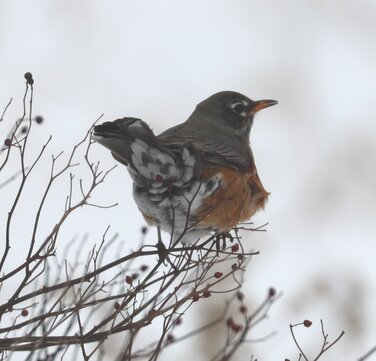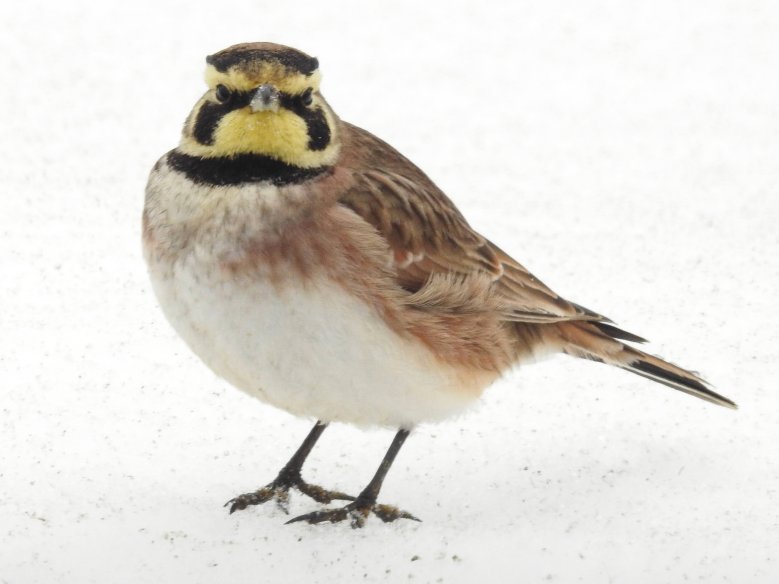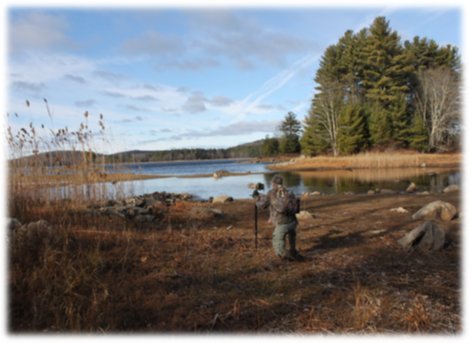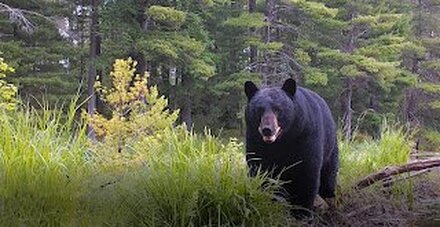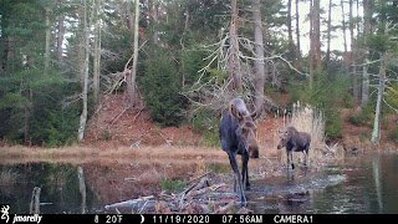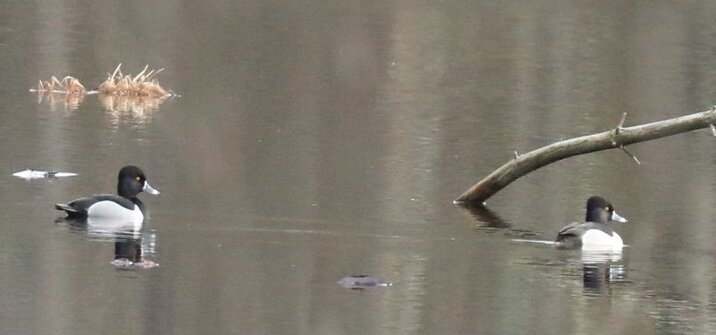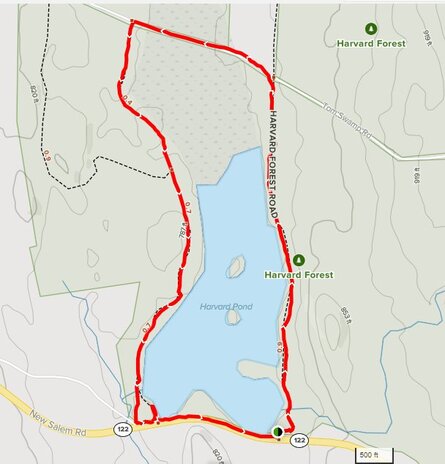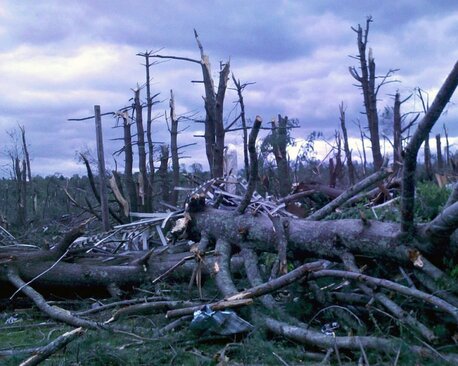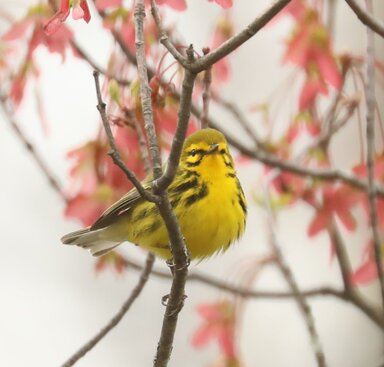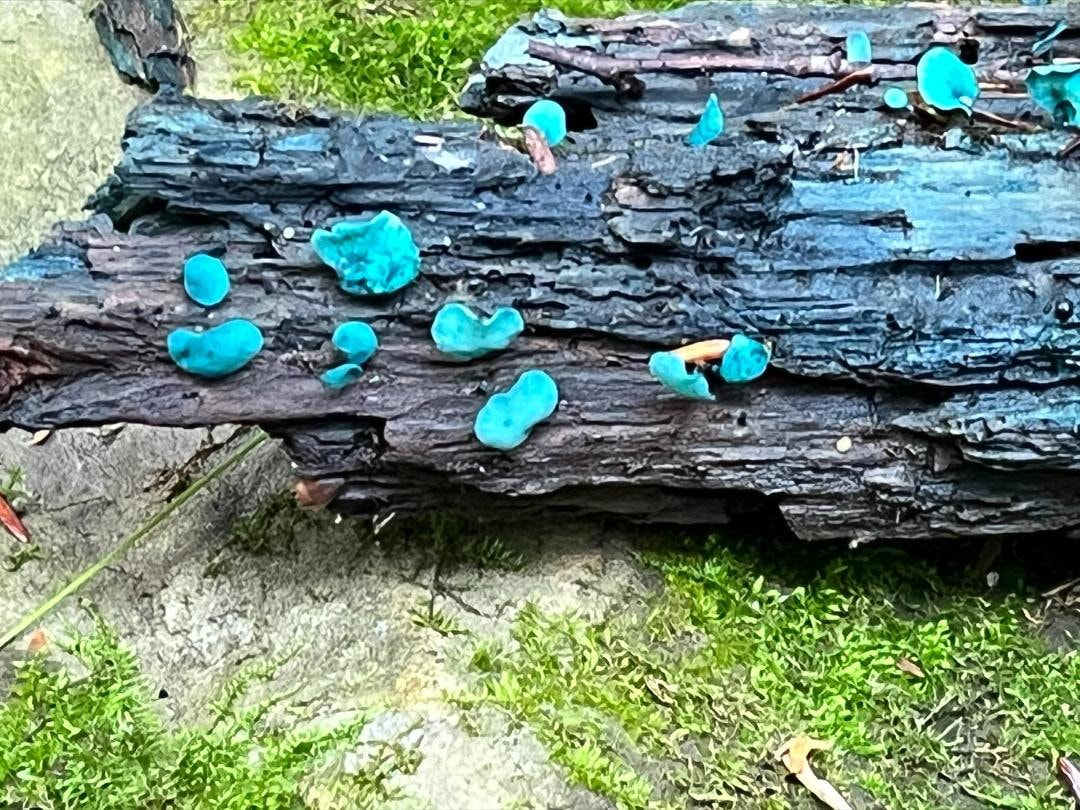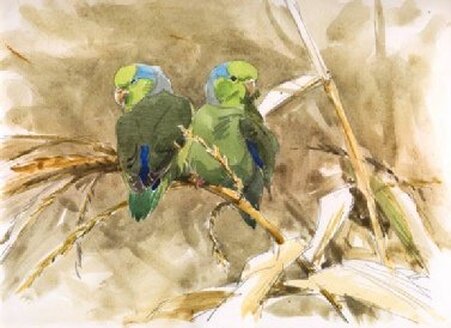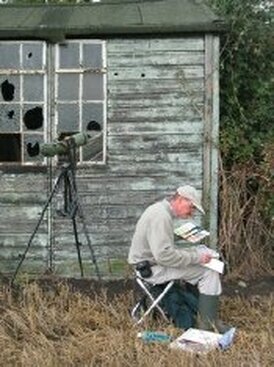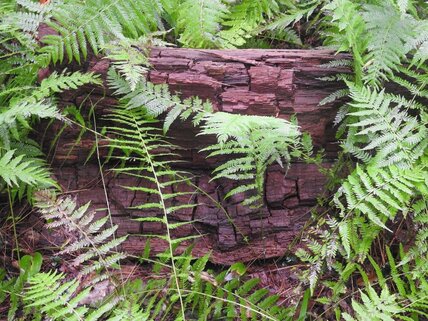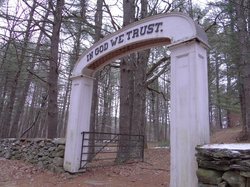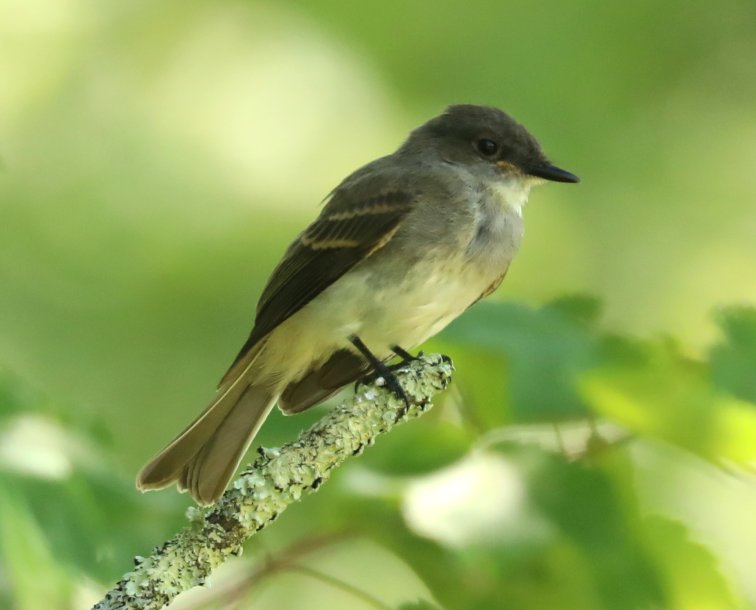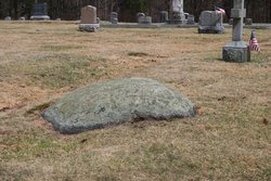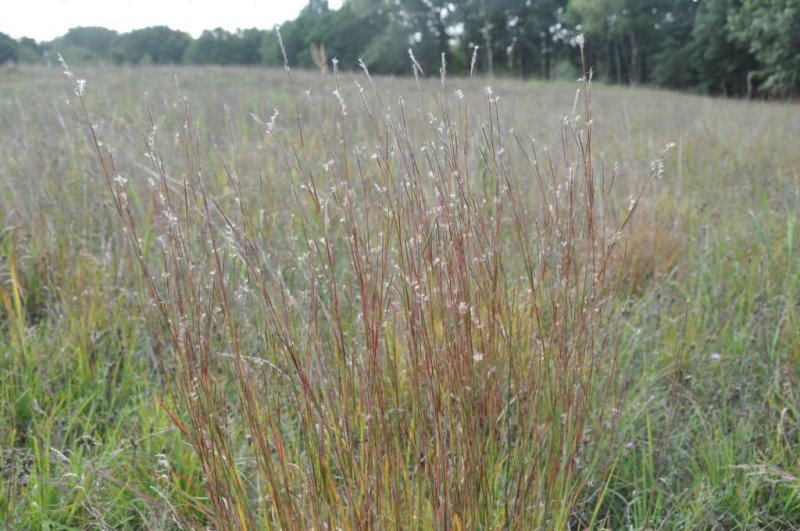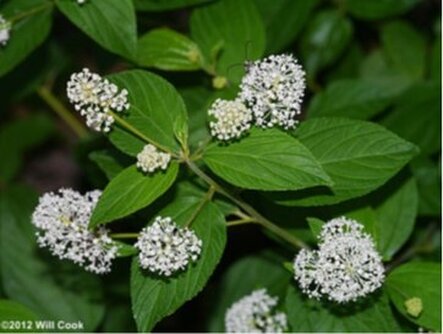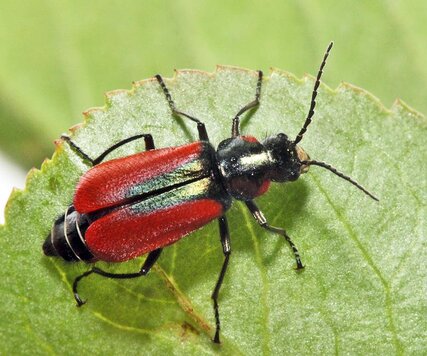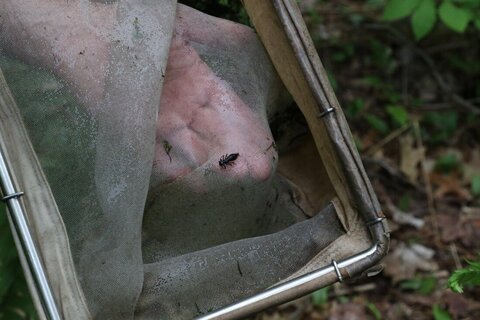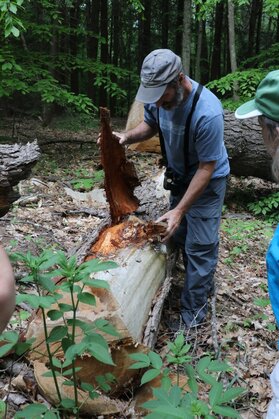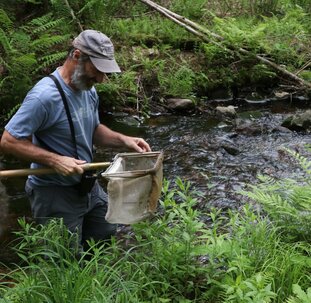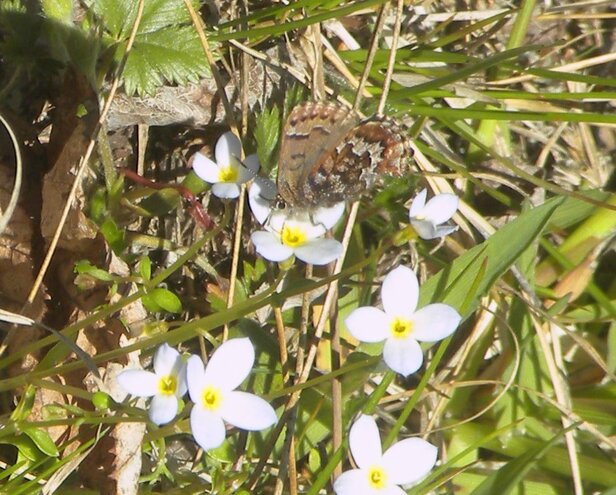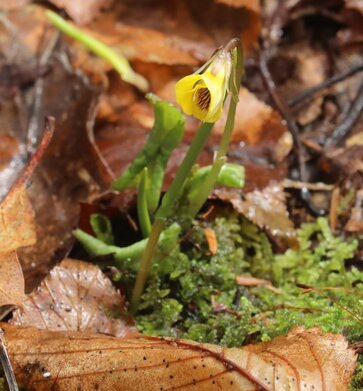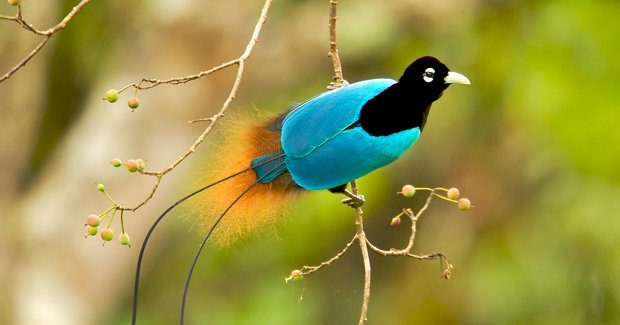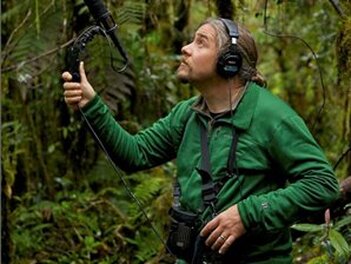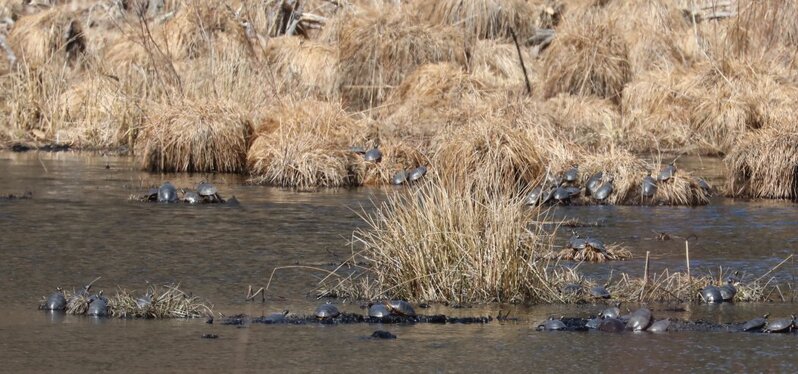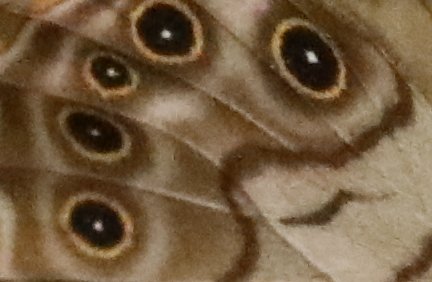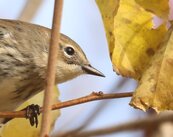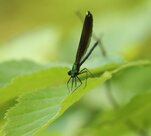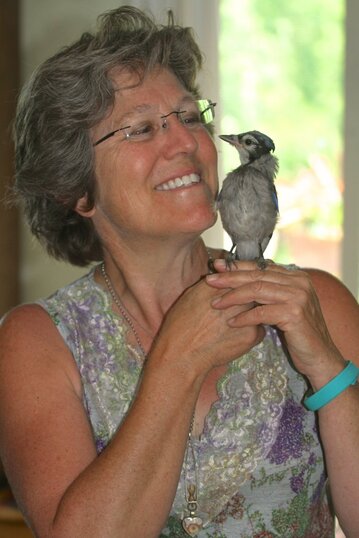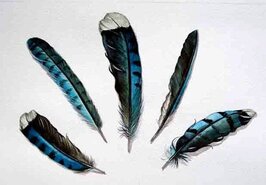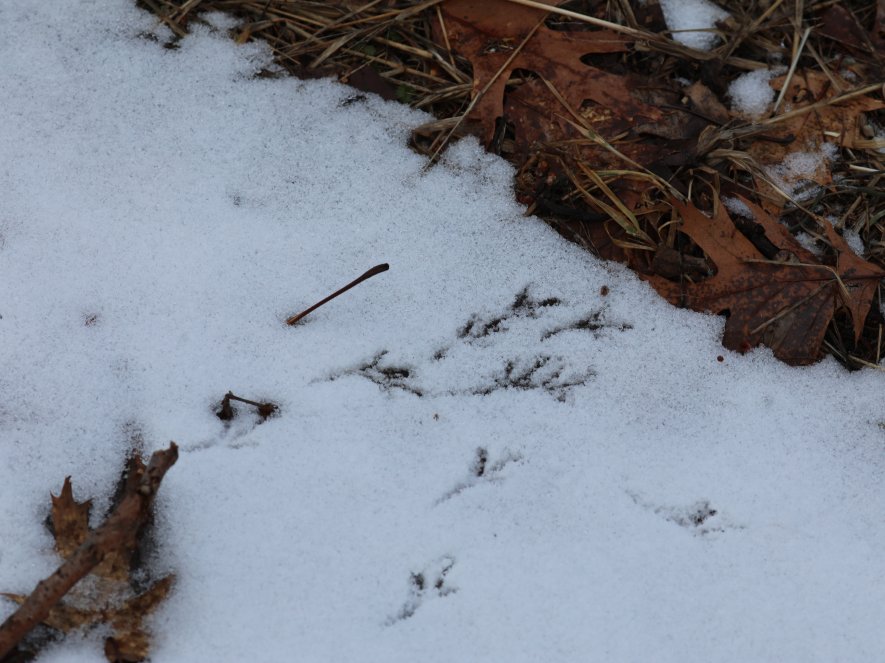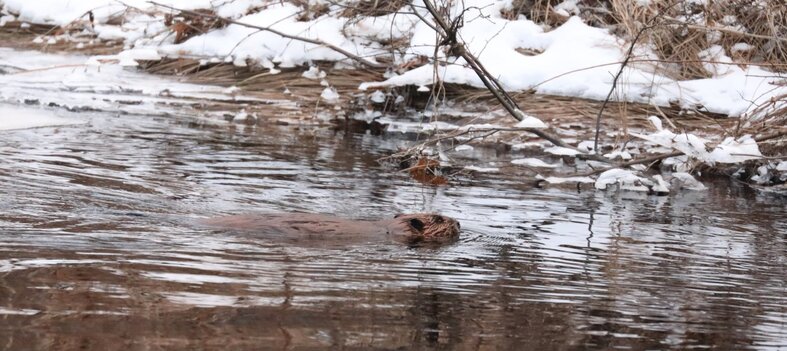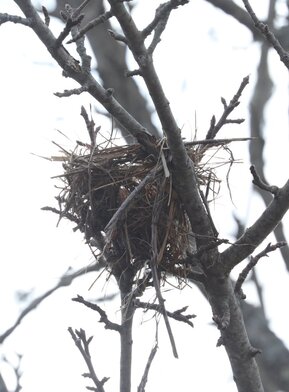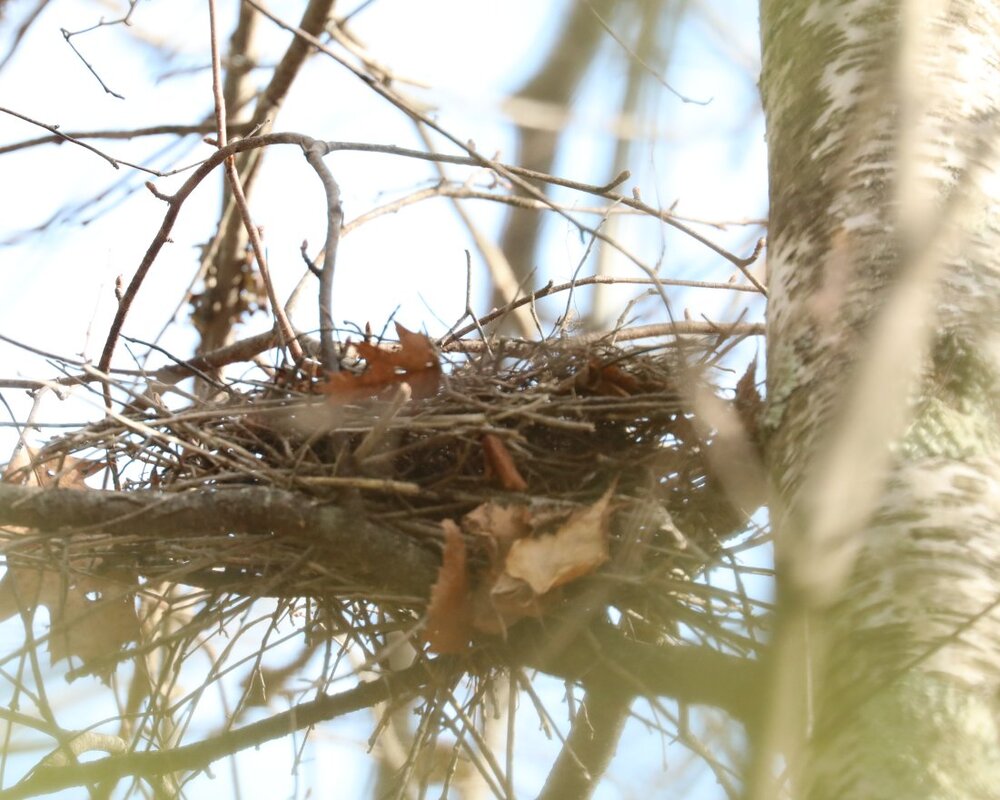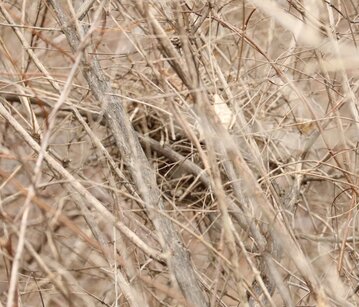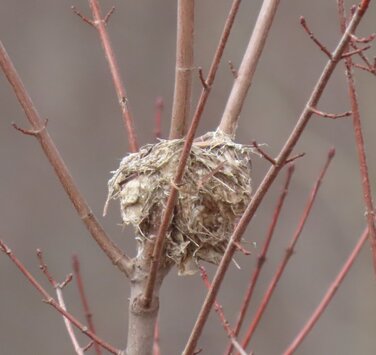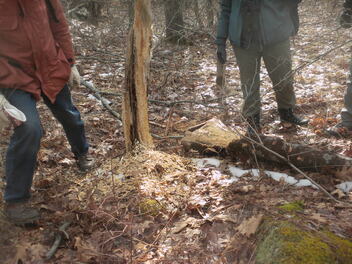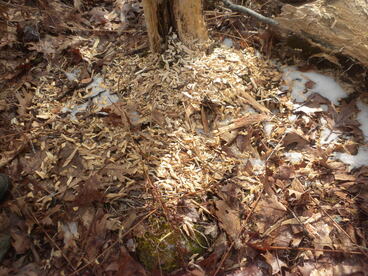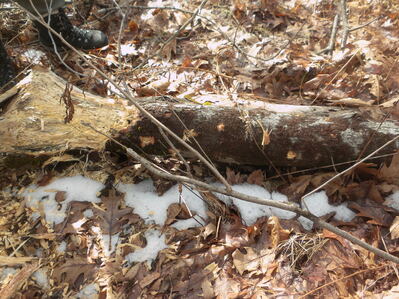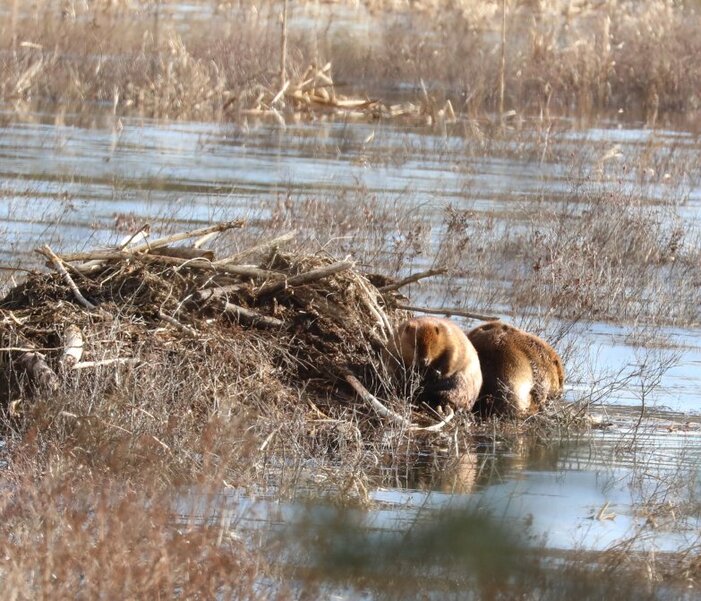>> PAST EVENTS <<
2021
CHRISTMAS BIRD COUNTS
National Audubon Society’s 122nd Christmas Bird Count will take place
Tuesday, December 14, 2021 through Wednesday, January 5, 2022.
Click here for a map view of the circles expected to be included in the 122nd CBC.
If you would like to participate, please contact compiler(s) for details.
|
American Robin by Alan Rawle
WORCESTER Saturday, December 18th (snow/ice date: Sunday, December 19th) Compiler: John Liller (508-877-5770) Email:john.liller@worcesteracademy.org ATHOL Saturday, December 18th Compiler: David Small (978-413-1772) Email: dave@atholbirdclub.org 5:30 pm – 7:30 pm Christmas Bird Count wrap-up and party in-person or virtual. All Covid-19 guidelines will be followed. |
GROTON-OXBOW Sunday, December 19th
If interested in helping us cover the town of Shirley, contact warerivernatureclub@yahoo.com QUABBIN Saturday, January 1st Compiler: Scott Surner Email: ssurner@aol.com WESTMINSTER Tuesday, January 4th Compiler: Charles Caron (978-874-5649) Email: caronenv@aol.com Horned Lark by Doug Wipf
|
REACHING 4,000 MILES: A DECADE
OF HIKING AND PHOTOGRAPHING
THE QUABBIN WOODS
It’s November and time to think about hunting. . .with cameras!
Jim is a passionate hiker and outdoor enthusiast who has thoroughly explored
“The Quabbin” and captured many amazing photographs along the way.
Besides his portable equipment, Jim deploys a number of remote trail cameras,
and he has a lot to share about what he has learned about the animals that call the Quabbin Reservation home. He also has some thoughts about hiking the area as well as tips for successful camera-trapping.
Those who joined us for this entertaining program learned about these highlights:
~ top wildlife experiences
~ unique found objects
~ worst wildlife experience
~ longest/coldest hikes
~ interesting wildlife photo captures (DLSR & trail cams).
Jim is a passionate hiker and outdoor enthusiast who has thoroughly explored
“The Quabbin” and captured many amazing photographs along the way.
Besides his portable equipment, Jim deploys a number of remote trail cameras,
and he has a lot to share about what he has learned about the animals that call the Quabbin Reservation home. He also has some thoughts about hiking the area as well as tips for successful camera-trapping.
Those who joined us for this entertaining program learned about these highlights:
~ top wildlife experiences
~ unique found objects
~ worst wildlife experience
~ longest/coldest hikes
~ interesting wildlife photo captures (DLSR & trail cams).
PLAYING IT SAFE
The spacious meeting room at the library allows for socially-distanced seating.
We ask that attendees be vaccinated.
Please be prepared to don a face mask if we are unable to open windows for ventilation.
The spacious meeting room at the library allows for socially-distanced seating.
We ask that attendees be vaccinated.
Please be prepared to don a face mask if we are unable to open windows for ventilation.
HARVARD POND NATURE HIKE
PETERSHAM
Sunday November 7, 2021 9:30 a.m.
PETERSHAM
Sunday November 7, 2021 9:30 a.m.
We enjoyed a leisurely morning hike of about 3 miles around this picturesque pond. Waterfowl species were limited to Mallards, Black Ducks, and a few distant teal.
The bird list was otherwise typical for the mixed habitats at this location
and the time of year.
A complete checklist can be viewed here: https://ebird.org/checklist/S97281992
As a result of the wet summer and fall we also encountered numerous species of interesting and colorful fungi.
The bird list was otherwise typical for the mixed habitats at this location
and the time of year.
A complete checklist can be viewed here: https://ebird.org/checklist/S97281992
As a result of the wet summer and fall we also encountered numerous species of interesting and colorful fungi.
AVIAN RESPONSE
TO A LARGE-SCALE TORNADO
IN MASSACHUSETTS
by Drew Vitz, State Ornithologist
Wednesday October 27, 2021 7 p.m.
Rutland Public Library
On June 1, 2011 a large tornado cut a 40-mile path of destruction from Westfield to Charlton in south-central Massachusetts. This natural disturbance heavily damaged the existing mature forest and gave rise to a substantial amount of young forest habitat. To document the avian response to this rare event, MassWildlife and partners deployed automated recording units (ARUs) during the nesting period to record bird songs in areas that were impacted by or adjacent to the tornado’s path. After presenting an overview of the benefits of young forest habitat, Drew explained Mass Wildlife's goal of balancing diverse habitats types on its properties. He then spoke about the outcome of the acoustic monitoring,
the bird species that showed up as the forest began to regenerate,
species diversity in young forest habitat.
the bird species that showed up as the forest began to regenerate,
species diversity in young forest habitat.
PLAYING IT SAFE
The spacious meeting room at the library allows for socially-distanced seating.
We ask that attendees be vaccinated.
Please be prepared to don a face mask if we are unable to open windows for ventilation.
The spacious meeting room at the library allows for socially-distanced seating.
We ask that attendees be vaccinated.
Please be prepared to don a face mask if we are unable to open windows for ventilation.
EXPLORING FALL FUNGI
|
Persistent summer rains fueled widespread mushroom fruiting which continued into the fall. Knowledgeable fungi enthusiast Joe Choiniere led nine participants on a short exploratory walk near the dam spillway. We encountered
Amanita, Russula, Lactarius and other common groups, as well as some of the more mid- and late-fall groups like Clitocybe and Hygrophorus. More than a dozen species were examined and discussed, with special attention paid to field marks and identification points. |
In this illustrated talk, nature artist Barry Van Dusen took us on trips around the corner and across the globe. We saw some spectacular scenery, met some interesting people, and, of course, saw some good birds! Barry shared his experiences as Artist-in-Residence at several museums and botanic gardens around New England. We then accompanied him and a team of international artists as they traveled to far-off destinations with the Artists for Nature Foundation-- the fenlands of England, the coastal forests of Peru, and a bird migration hotspot in Israel. Finally, we visited Maine, with stops at the Rangeley Lakes region and Acadia National Park.
|
Barry W. Van Dusen is an internationally recognized wildlife artist living in central Massachusetts. His articles and paintings have been featured in Bird Watcher's Digest, Birding, and Yankee magazines, and he has illustrated a variety of natural-history books and pocket guides. In 1994, Barry was elected a full member of London's Society of Wildlife Artists. His work has been exhibited regularly in the prestigious Birds in Art Exhibition (Wausau, Wisconsin), as well as in many galleries in the United States and Europe. At the invitation of the Artists for Nature Foundation, Barry has traveled to Spain, Ireland, England, Israel, India and Peru, working alongside other wildlife artists to raise money for conservation of threatened habitats. |
To learn more about Barry and his work, visit
http://www.barryvandusen.com/ |
ALMOST-AUTUMN NATURE HIKE
WARE RIVER WATERSHED, BARRE
Saturday September 18, 2021 9 a.m.
WARE RIVER WATERSHED, BARRE
Saturday September 18, 2021 9 a.m.
With the autumn equinox coming right up, participants took a walk along a portion of
the Ware River Rail trail and along old roadways in the Ware River Watershed in Barre.
On the way to our destination--Riverside Cemetery--we watched for migrant birds. Although quiet in terms of birdlife throughout most of the walk, we encountered one very active mixed flock where
Covered Bridge Road ends at the Ware River.
A complete list of birds can be found at https://ebird.org/checklist/S94852143
Some notes of interest about the cemetery may be found at:
https://heritagezen.blogspot.com/2010/09/tombstone-tuesday-jacob-riis-riverside.html
|
Brian and Martha Klassanos’ Willow Farm property is part of the Muddy Brook Valley, a region defined by deep coarse glacial sands that underlay the area and give rise to its unique features. The fire-influenced natural communities, often referred to as barrens, that were present until modern practices resulted in forest growth, supported plant, invertebrate, and animal species that are now rare in the state. Restoration efforts are bringing these species back.
Following in the footsteps of Mass Wildlife’s barrens restoration projects, Brian launched a full-scale effort on his own property which has resulted in the presence of an ecological treasure-trove of plant and moth species. Walk participants took a casual tour of the property and learned about some of the characteristics of barrens communities. |
New Jersey Tea (Ceanothus americanus) and many other native plants were in bloom. We encountered one American Woodcock and heard a Prairie Warbler. A pair of American Kestrels nesting here weren't detected, but East Quabbin Land Trust monitors found a female with at least four eggs in the nestbox about 5 days ago. [On a follow-up visit on 25 June reported to eBird, the male kestrel was seen.]
|
|
Our monthly educational program took place outdoors, a hands-on learning experience along with a talk by naturalist, photographer and insect identification master Tom Murray.
After a brief overview of taxonomics and insect families, we explored pond- and road-side, Tom talked about how to tell an insect from a true bug, spiders, millipedes etc. He then demonstrated various live-collecting methods for finding insects and some techniques for observing and photographing these creatures. Some of us tried out the sweep net and shaking leaves of shrubs over a catch cloth to see what emerged. We found mostly spiders and minute insects that required magnification through the opposite end of our binoculars. Dark clouds were rolling in and making it hard to view some of our finds (or take photos). Using a net in a shallow boggy area, we inadvertently brought up a couple of tadpoles with an insect or two. Tom's final demonstration was use of a kick net in a stream bed, where he located a juvenile salamander, a dragonfly larva, and stonefly larva. |
Besides being interested in all kinds of wildlife, Tom is the author of and major contributing photographer for the field guide Insects of New England & New York. He is a regular contributor/editor for BugGuide.net. With the assistance of other amateur and professional entomologists, he has documented previously-unknown distribution ranges for numerous insects as well as new county, state and North American records.
|
Monthly Program via ZOOM--
THE NATURE OF SPRING
with Joe Choiniere
Wednesday April 28, 2021 7 p.m.
Wednesday April 28, 2021 7 p.m.
Naturalists universally love springtime. The calendar procession of natural events--arrival of migrant birds, wildflowers blooming, movements of vernal pool amphibians, and other well-known Spring phenomena never go unappreciated. There is also much more. Organisms including mosses, lichens, fungi, grasses, and other animals such as mammals exhibit interesting and remarkable spring-time occurrences as well. There’s a lot happening out there! In this program Joe shared some of both the commonplace
and lesser-known signs of spring.
A founding member of WRNC, Joe Choiniere has worked in the conservation field for over 40 years and taught numerous courses in all aspects of nature study. He is a lifelong naturalist and holds a B.S. in Natural History
from UMass/Amherst.
and lesser-known signs of spring.
A founding member of WRNC, Joe Choiniere has worked in the conservation field for over 40 years and taught numerous courses in all aspects of nature study. He is a lifelong naturalist and holds a B.S. in Natural History
from UMass/Amherst.
EARLY SPRING NATURE WALK
IN PETERSHAM
Saturday April 18, 2021 9:30 a.m. - 12:30 p.m.
|
Five participants chose to take this slow-paced, exploratory walk at Swift River Preserve, a Trustees property. The main trail traverses forested habitat along the river punctuated by sections of beaver wetlands, young hardwood groves, and dramatic rock outcroppings. Small open fields are adjacent to the entrance. Trees and shrubs were in colorful early bud stage, and the river was flowing swiftly, helped in part by rain 36 hours prior to the field trip.
We kept an eye out for early spring migrants and found Pine (heard more than seen!) and Palm warblers, Yellow-bellied Sapsuckers, and Winter Wren (singing). For a complete list of the birds encountered, see: https://ebird.org/checklist/S85856192 Some vernal pools held egg masses of Spotted Salamander and Wood Frogs. |
One sharp-eyed participant found an emerging round-leaved violet (Viola rotundifolia).
For details about this plant: https://gobotany.nativeplanttrust.org/species/viola/rotundifolia/ |
|
with Edwin Scholes
|
VERNAL EQUINOX BIRD & NATURE WALK
Richardson WMA, BROOKFIELD
Saturday March 20, 2021 10 -1 p.m.
Richardson WMA, BROOKFIELD
Saturday March 20, 2021 10 -1 p.m.
This was a slow-paced walk through a small forested area, several fields, and along the edges of Quaboag Marsh. Although it was sunny, clear, and warming quickly, there was still a thin coat of ice on much of the water. Early migrant birds seen were Turkey Vulture and Wood Duck. A complete checklist is here: https://ebird.org/checklist/S83770704 The rising temperature brought out at least one woolly bear (Pyrrharctia isabella) caterpillar and a spring peeper, both seen alongside the trail. Many painted turtles were out basking in the small pond near the Route 9 end of the WMA.
2021 Annual Meeting via ZOOM
February 28th 12:30 - 4:30 p.m.
AUCTION
GUEST SPEAKER: JULIE ZICKEFOOSE
SAVING JEMIMA: LIFE AND LOVE WITH A HARD-LUCK JAY
MYSTERY PHOTO QUIZ Winners announced.
GUEST SPEAKER: JULIE ZICKEFOOSE
SAVING JEMIMA: LIFE AND LOVE WITH A HARD-LUCK JAY
MYSTERY PHOTO QUIZ Winners announced.
THANK YOU
to Dave Small and Athol Bird & Nature Club for making this event possible.
to Dave Small and Athol Bird & Nature Club for making this event possible.
SAVING JEMIMA:
LIFE AND LOVE WITH A HARD-LUCK JAY
with JULIE ZICKEFOOSE
|
Julie Zickefoose lives and works quietly on an 80-acre wildlife sanctuary in the back country of Whipple, Ohio. She is a prolific writer and painter and Contributing Editor to Bird Watcher’s Digest. Natural Gardening for Birds, Letters from Eden, The Bluebird Effect, and Baby Birds: An Artist Looks Into the Nest are joined by Saving Jemima: Life and Love With a Hard-Luck Jay, the intimate story of how
an orphaned bird can save a soul. |
Naturalist/artist/writer Julie Zickefoose thinks of herself as an unsung, minor, rather dirty superhero. Her superpower: saving small, economically worthless wildlife that would otherwise die. An orphaned jay named Jemima was one such foundling. Spending nearly a year healing, studying and raising the young blue jay for release opened the door to their world for Julie. She began writing and illustrating Saving Jemima: Life and Love With a Hard-luck Jay immediately upon becoming her foster mother. More than a wildlife rehab story, it’s the story of life, love and dealing with great loss; of finding grace and redemption in bonding with a wild bird. |
Interested in reading the book? We recommend buying directly from Julie here: http://www.juliezickefoose.com . Click on the picture of the book.
Signed/inscribed copies are available. You don’t get that from Amazon!
Signed/inscribed copies are available. You don’t get that from Amazon!
This winter walk took place following a series of snowstorms that led to an accumulation of 8 - 12" of the white stuff. Cold conditions kept the snow powdery yet navigable with boots. A few of us used snowshoes because not all of the selected trail was packed down. The clear, crisp day with bright sunshine didn't bring out many birds except a few Black-capped Chickadees
(as expected on busy recreational trails away from birdfeeders).
We hiked down Tracy Road to Brigham Road, watching for tracks
and sign of mammals other than domestic canines.
Eventually we were rewarded with sets of otter tracks and slides along the river, some of which had been made after we passed by on our first leg. Just before turning around to return we came upon moose tracks and moose-browsed twigs from a day or two earlier. Although tracks and holes of rodents were noted,
we didn't attempt to identify them all.
A few participants noticed snow fleas, or springtails (Collembola) that had emerged. These hexapods are no longer considered insects
and have no internal mouthparts.
(as expected on busy recreational trails away from birdfeeders).
We hiked down Tracy Road to Brigham Road, watching for tracks
and sign of mammals other than domestic canines.
Eventually we were rewarded with sets of otter tracks and slides along the river, some of which had been made after we passed by on our first leg. Just before turning around to return we came upon moose tracks and moose-browsed twigs from a day or two earlier. Although tracks and holes of rodents were noted,
we didn't attempt to identify them all.
A few participants noticed snow fleas, or springtails (Collembola) that had emerged. These hexapods are no longer considered insects
and have no internal mouthparts.
We all had some mid-winter laughs when we tuned in to this entertaining program by Rosemary Mosco, creator of the nature-based Bird and Moon comics. Rosemary easily convinced her audience that cartoons and conservation are a natural fit.
It was truly enjoyable to see so many clever combinations
of engaging images and nature observations.
It was truly enjoyable to see so many clever combinations
of engaging images and nature observations.
|
Getting to know what makes Rosemary tick was part of the fun. We were able to experience how she blends science, humor, and heart to create books and comics about wildlife. Her Bird and Moon comics are collected in the book
Birding Is My Favorite Video Game, a 2019 ALA Great Graphic Novel for Teens, and have appeared in publications ranging from the scientific journal Nature Ecology & Evolution to the children’s magazine Ranger Rick. To learn more, visit http://www.birdandmoon.com/ |
EMPTY (BIRD) NEST
EXPLORATION WALK
Ware River Watershed “Prison Camp” Area, Rutland
Sunday January 17, 2021 10 a.m. - 1 p.m.
EXPLORATION WALK
Ware River Watershed “Prison Camp” Area, Rutland
Sunday January 17, 2021 10 a.m. - 1 p.m.
